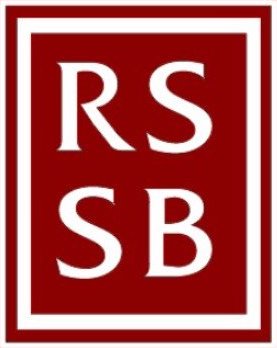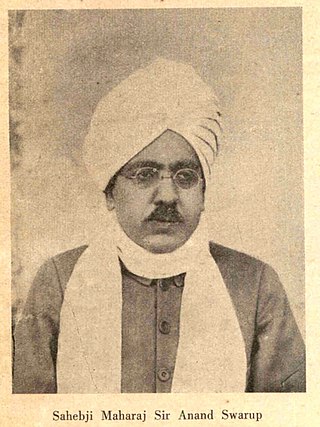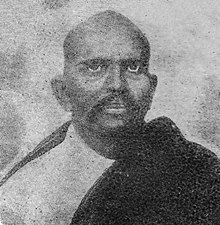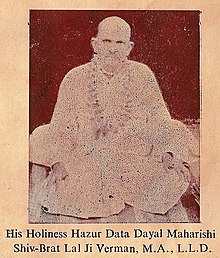David Christopher Lane is a professor of philosophy and sociology at Mt. San Antonio College, in Walnut, California. He is notable for his book The Making of a Spiritual Movement: The Untold Story of Paul Twitchell and Eckankar which exposed the origins of Eckankar and demonstrated the plagiarism of its founder, Paul Twitchell. He is also notable for introducing to a wider audience the teachings of Baba Faqir Chand, the Indian exponent of Surat Shabd Yoga from Hoshiapur in the book, The Unknowing Sage: The Life and Work of Baba Faqir Chand. Lane founded the journal, Understanding Cults and Spiritual Movements in the 1980s which featured critical studies of John-Roger Hinkins and Movement of Spiritual Inner Awareness, Adi Da, and Sathya Sai Baba. His most recent book, The Sound Current Tradition (2022) was on Nada Yoga and Surat Shabd Yoga in new religions and was published by Cambridge University Press. He also co-authored an annotated bibliography on the Radhasoami Tradition with Mark Juergensmeyer for Oxford University Press (2018).
Contemporary Sant Mat Movements, mostly among the Radha Soami tradition, are esoteric philosophy movements active in the United States, Europe, Australia, Latin America, and especially India. These movements assert that Sant Mat shares a lineage with Sikhism and contains elements of thought found in Hinduism, such as karma and reincarnation. They further assert that Sant Mat also contains elements found in Sufism and has inspired and influenced a number of religious groups and organizations. They refer to this spiritual path as the "Science of the Soul" or 'Sant Mat', meaning 'teachings of the saints'. More recently it has been described as "The Way of Life" or "Living the Life of Soul". It incorporates a practical yoga system known as Surat Shabd Yoga.
Surat Shabd Simran is a type of spiritual meditation in the Sant Mat tradition.

Rādhā Soāmī Mat or Sant Mat is a spiritual tradition or faith founded by Shiv Dayal Singh in January 1861 on Basant Panchami Day in Agra, India.

Radha Soami Satsang Beas is a spiritual organisation in Radha Soami movement. It is headed by Gurinder Singh Dhillon. The main centre of Radha Soami Satsang Beas is located on the banks of the Beas River in the northern Indian state of Punjab.

Shiv Dayal Singh, known by the honorific "Param Purush Puran Dhani Huzur Soami Ji Maharaj" by his disciples and devotees, was an Indian spiritual guru and founder of Radha Soami, a 19th-century spiritual sect.

Sawan Singh, also known as The Great Master or Bade Maharaj ji, was an Indian Saint or Sant. He was the second spiritual head of Radha Soami Satsang Beas (RSSB) from the death of Jaimal Singh in 1903 until his own death on 2 April 1948.

Sir Anand Swarup, also known as Param Guru Huzur Sahabji Maharaj, was the founder of Dayalbagh. He was the fifth revered leader, or Sant Satguru, of the Dayalbagh branch of the Radha Soami sect, who succeeded Sarkar Sahab in 1913. He also laid the foundation of Radha Soami Educational Institute, a co-educational middle school which opened in 1917 and later expanded and developed as Dayalbagh Educational Institute. He wrote many holy books on the Radha Soami sect, explaining the concepts of Surat Shabd Yoga and objectives of Radha Soami in general.
Sant Mat was a spiritual movement on the Indian subcontinent during the 13th–17th centuries CE. The name literally means "teachings of sants", i.e. mystic Hindu saints. Through association and seeking truth by following sants and their teachings, a movement was formed. Theologically, the teachings are distinguished by inward, loving devotion by the individual soul (atma) to the Divine Principal God (Parmatma). Socially, they are mostly ascetics except few householders. Sant Mat is not to be confused with the 19th-century Radha Soami, also known as contemporary "Sant Mat movement".
Julian P. Johnson (1867–1939) was an American surgeon and author of several books on Eastern spirituality. He spent much of 1932 to 1939 in India, was associated with the Radha Soami Satsang Beas spiritual society and Surat Shabd Yoga, and wrote five books as a result of his experiences.
Jaimal Singh (1839–1903) was an Indian spiritual leader. He became an initiate of Shiv Dayal Singh. After his initiation, Jaimal Singh served in the British Indian Army as a sepoy (private) from the age of seventeen and attained the rank of havildar (sergeant). After retirement, he settled in a desolate and isolated spot outside the town of Beas and began to spread the teaching of his guru Shiv Dayal Singh. The place grew into a colony which came to be called the "Dera Baba Jaimal Singh", and which is now the world centre of the Radha Soami Satsang Beas organisation.

Sant Satguru Ajaib Singh, also known to his disciples as 'Sant Ji' was the spritual master in Sant Mat Radha Soami spritual tradition. He was born September 11, 1926 in Maina, District Bhatinda, Punjab, India.

Jagat Singh (1884–1951) was an Indian spiritual leader and the head of Radha Soami Satsang Beas. He served as the guru for Beas Dera for three years, until his death in 1951 at the age of 67. He worked as a college chemistry professor at an Agricultural College and was honoured for his service by the British as Sardar Bahadur. After retirement he was chosen by his spiritual master to be his successor, becoming the third spiritual head of Radha Soami Satsang Beas. Jagat Singh assigned the duties of his successor and guru to his initiate Charan Singh.
Radha Swami Satsang, Dinod (RSSD) is an Indian spiritual organisation with its headquarters in Dinod village in the Bhiwani district of Haryana state. It promotes the Radha Soami sect that was founded by Shiv Dayal Singh on Basant-Panchami day in January 1861. The Radha Swami Satsang at Dinod (RSSD) was founded by Tarachand.

Salig Ram, successor of Shiv Dayal Singh second Sant Satguru of the Radhasoami Satsang popularly known by the honorific "Huzur Maharaj" and by the government-conferred title "Rai Bahadur," was born in Peepal Mandi, Agra, on 14 March 1829. He served as chief inspector of post offices in British India, and, in 1881, was Postmaster-General of the North-Western Provinces, based in Allahabad. He was the first Indian to hold the position.

Baba Faqir Chand, was an Indian master of Surat Shabd Yoga, or consciously controlled near death experience. He was one of the first saints or gurus of Sant Mat tradition to openly speak and write against the deceptive and harmful practices of modern guruism and religious intolerance. As a highly pragmatic individual, Faqir also strove to explain the various practices and principles of Sant Mat based on his own experiences and in the context of modern science and psychology. He was also the first Sant Mat guru to talk about the phenomena consisting of a believer experiencing a subjective projection of a sacred or holy form of a guru or idol without the conscious knowledge of the person at the center of the experience, i.e., the guru. This was termed the 'Chandian Effect', and described by researcher David C. Lane. Faqir Chand claimed that he had no knowledge of his form manifesting before a person and helping them with their worldly or spiritual problems. He fervently expressed that in his experience, the real helper is one's own true self and faith. Mark Juergensmeyer, another researcher on new religious movements, intrigued by the uniqueness of Faqir Chand's experiences, also interviewed him. This insightful interview was included in Faqir's autobiography.

Munshi Ram, Indian spiritual guru and follower of Faqir Chand.

Ishar Chander Sharma was a saint from Manavta Mandir Hoshiarpur, Punjab, India. Faqir Chand, a sant of the Sant Mat tradition, appointed him as a successor through his will dated 20 April 1980. With a PhD on Jain Philosopshy under PT Raju, Sharma specialized in epistemology and ethical philosophies of India.

Manavta Mandir or Be Human Temple in Hoshiarpur, Punjab, India, was established in 1962 by Baba Faqir Chand (1886–1981). In order to carry forward the mission of his religion of humanity, Faqir, with the financial help from Seth Durga Das established the temple which remained his center of activity till he died in 1981. The temple houses a statue of his guru, Shiv Brat Lal and portraits of other prominent gurus of Sant Mat, Radha Soami Mat and Sufi Mat.
Dayal is a name and given name. Notable people with the name include:
















